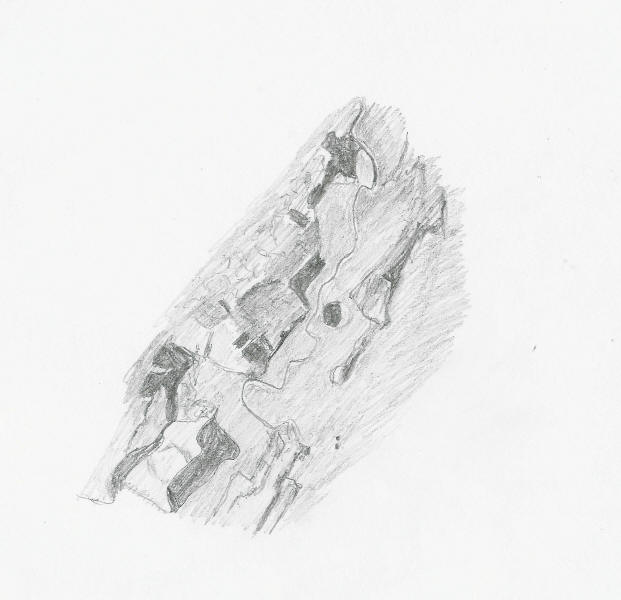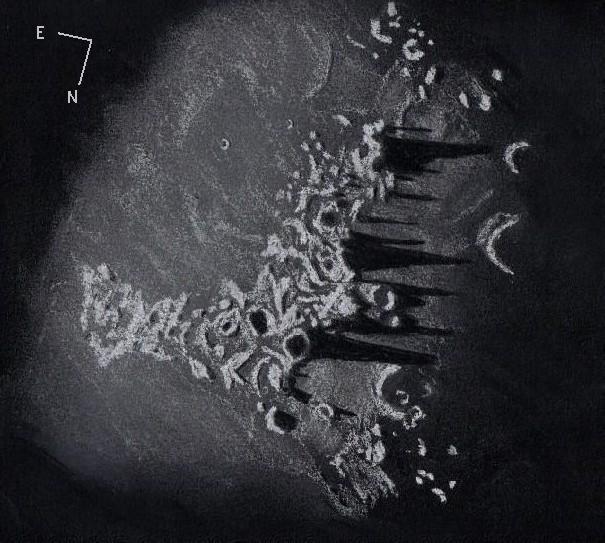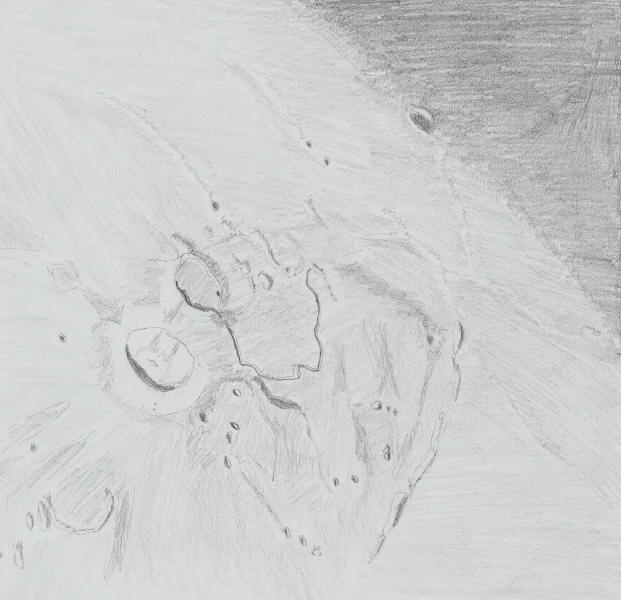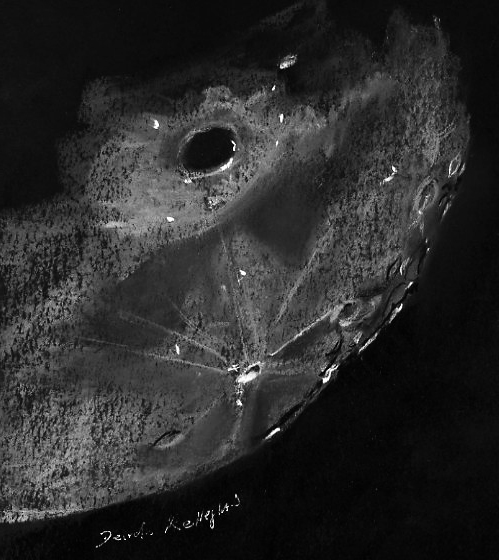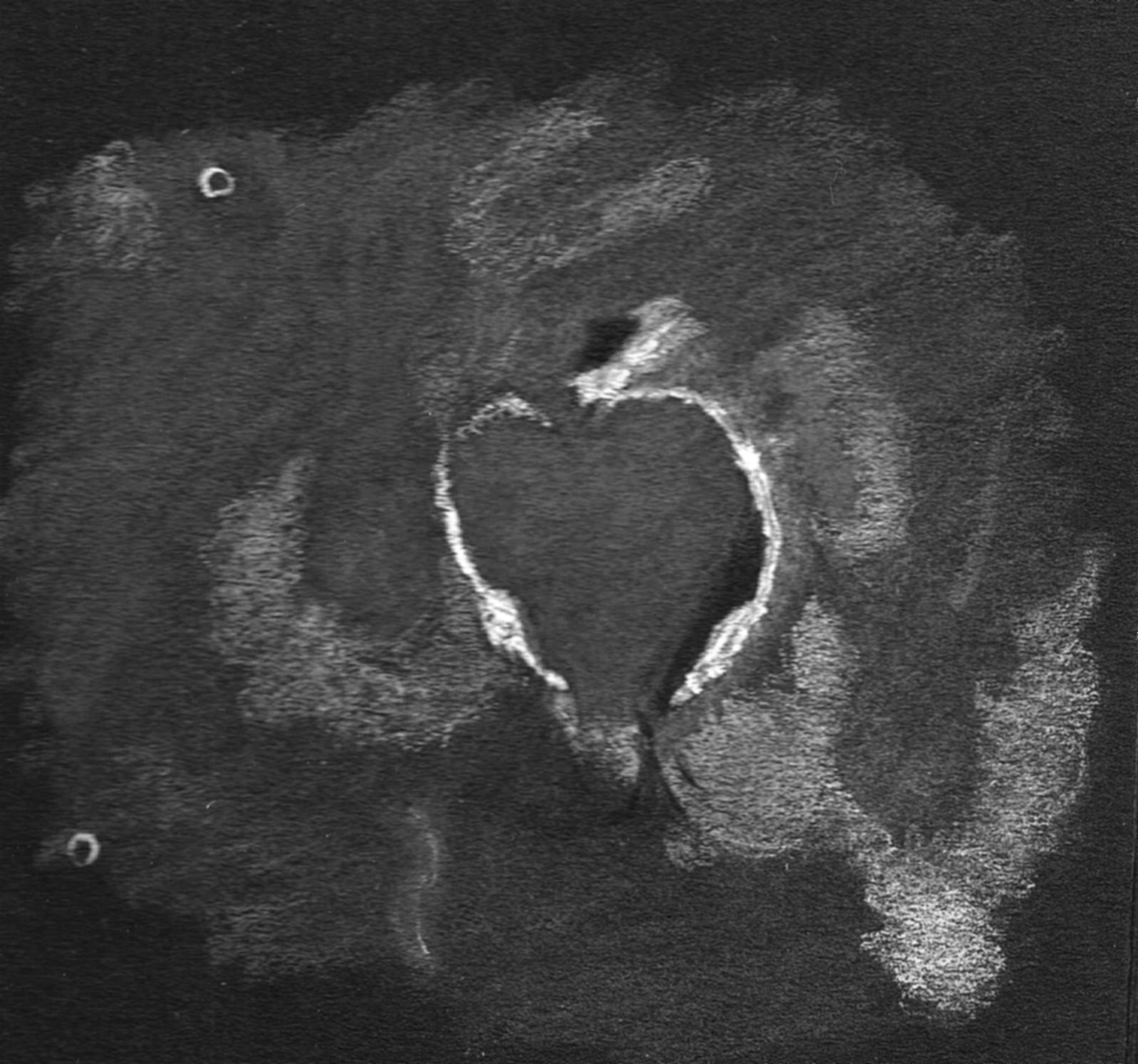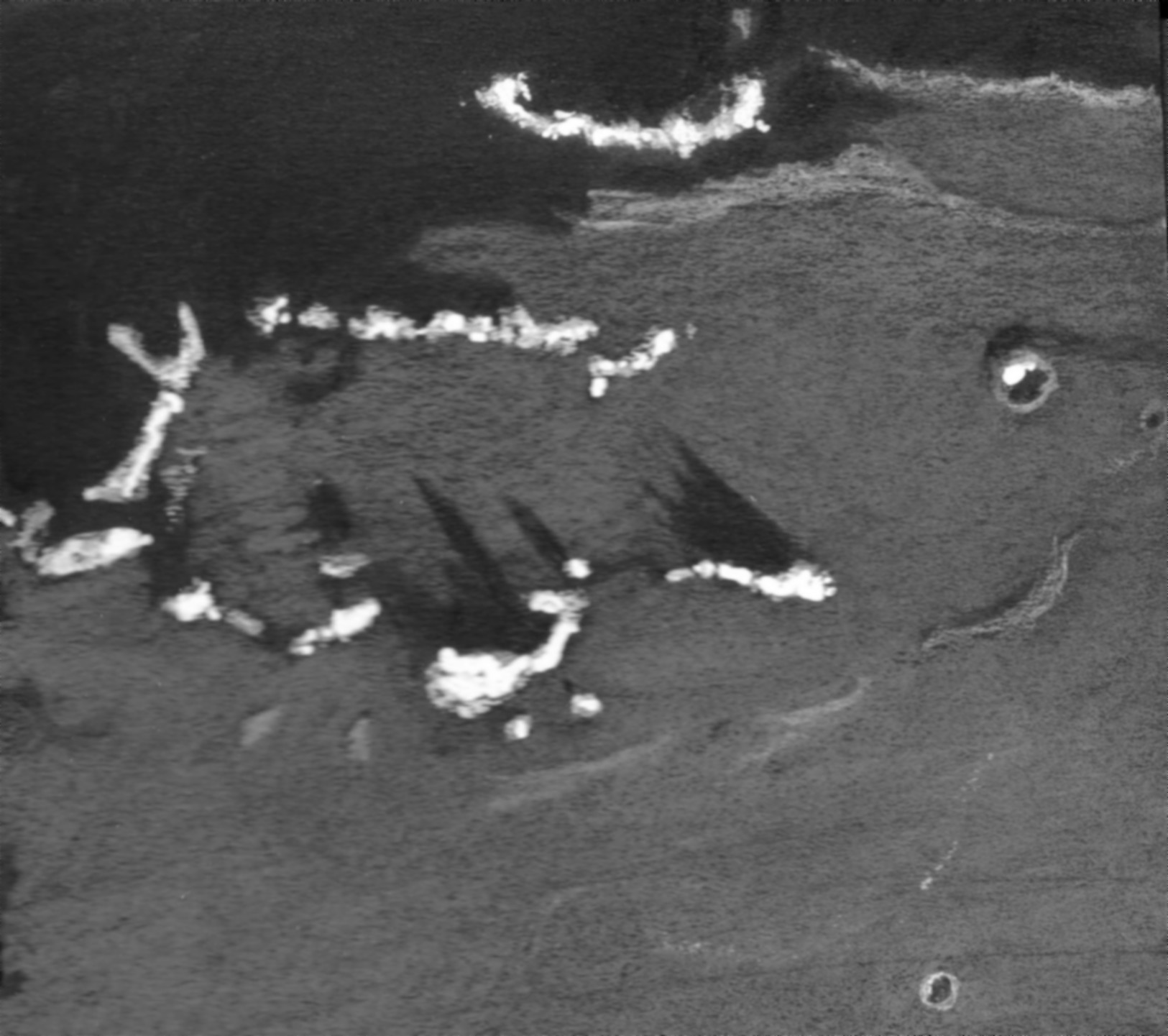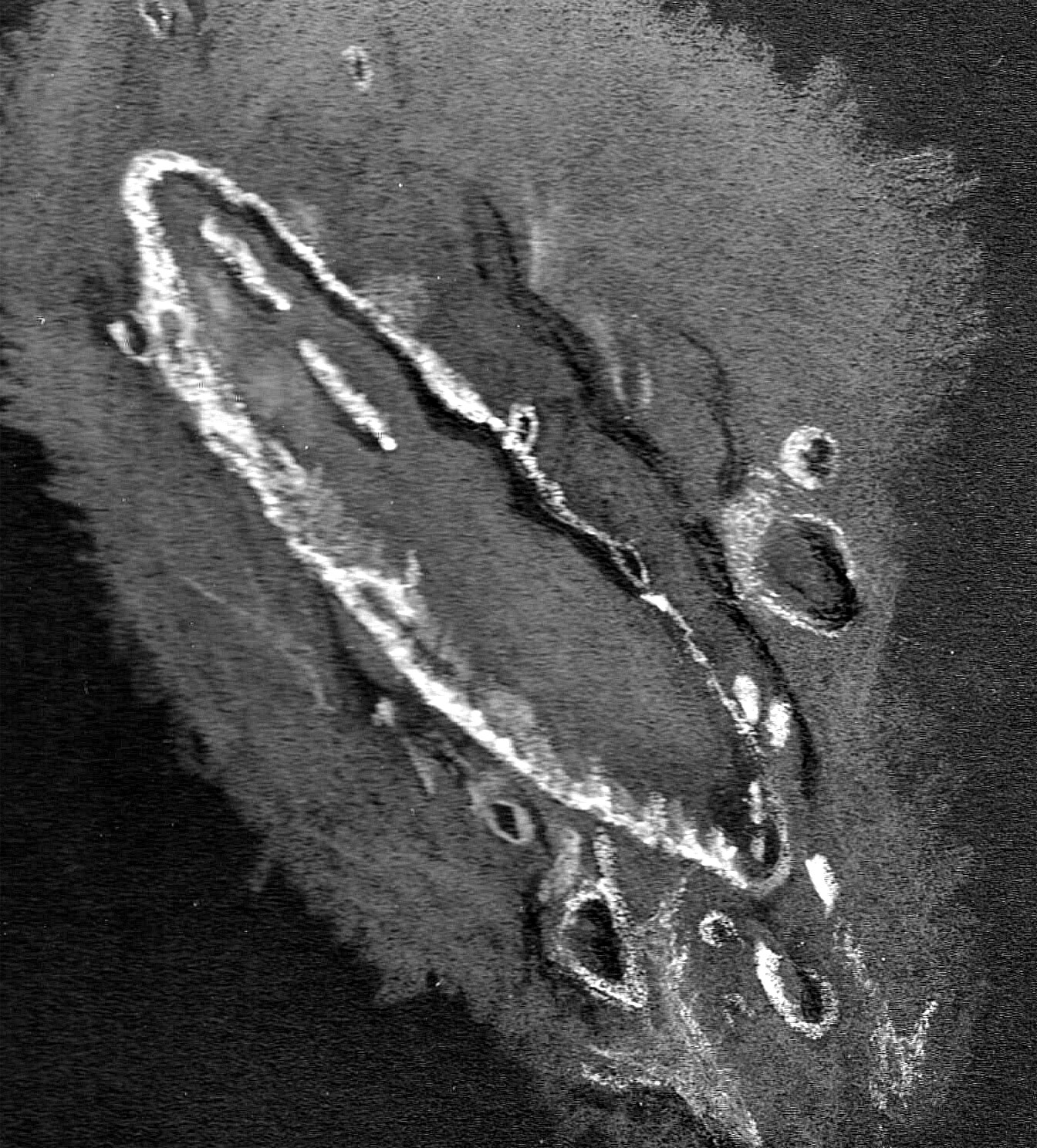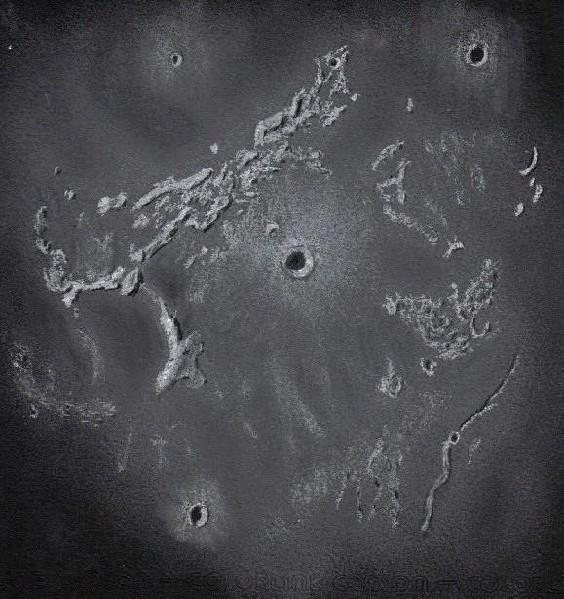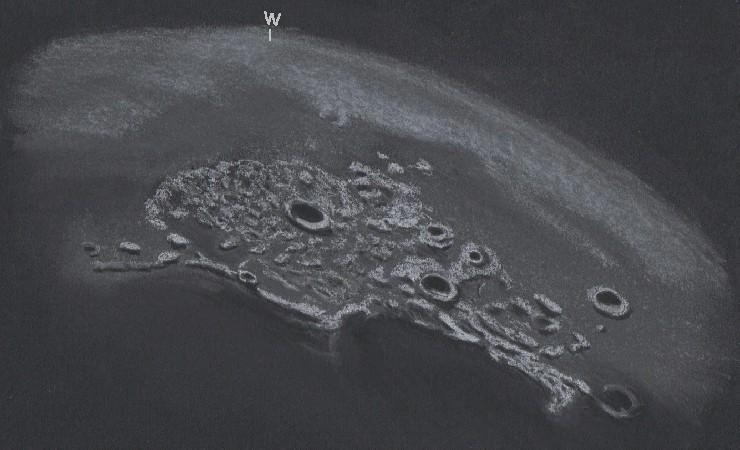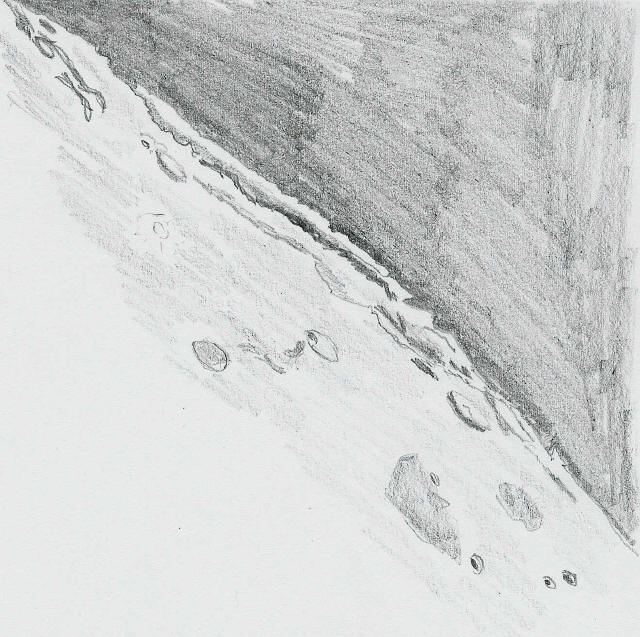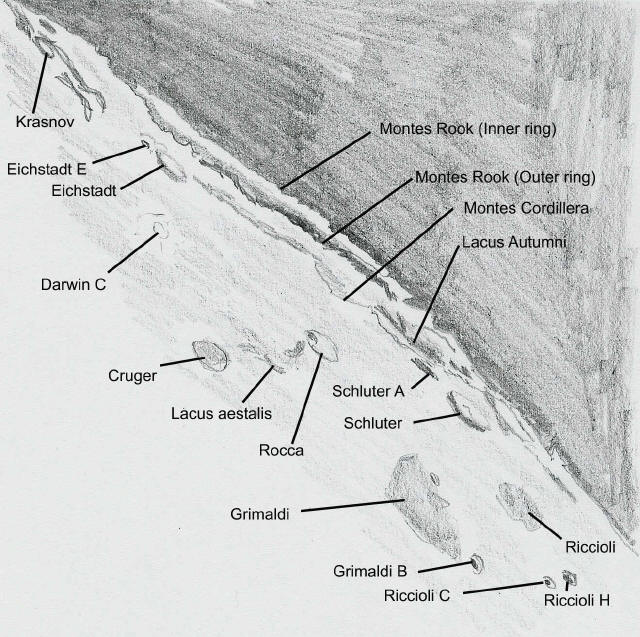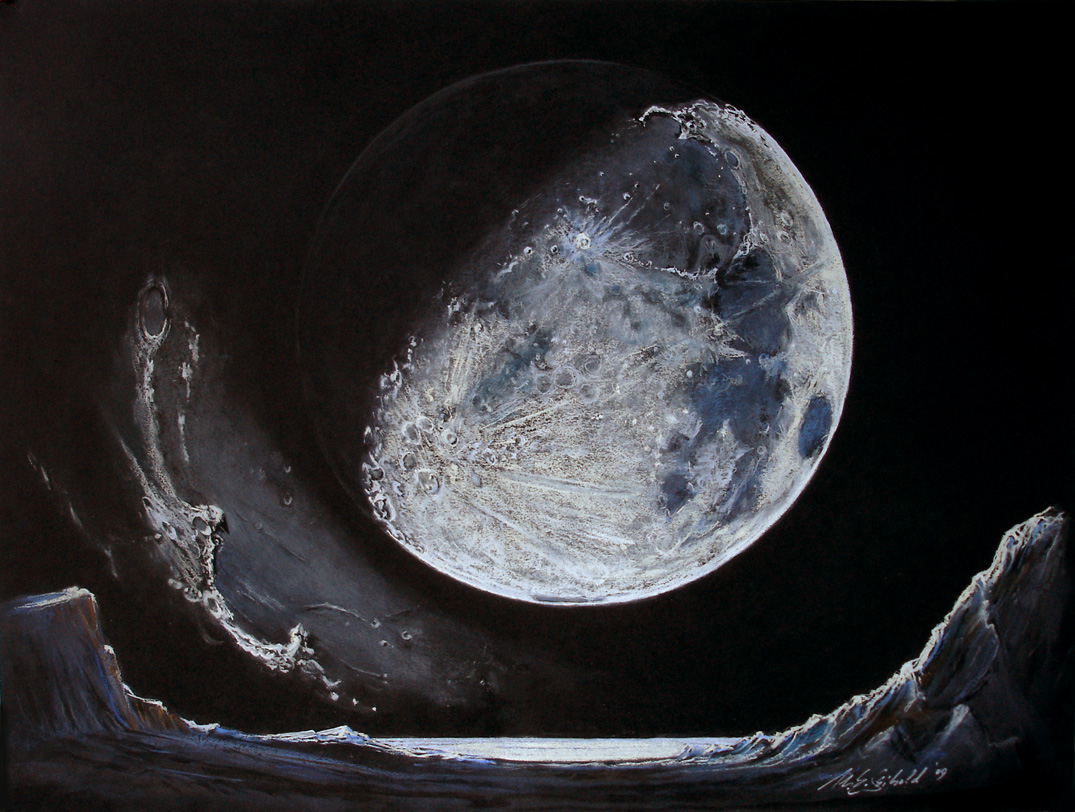
Moon – Gibbous With Sinus Iridum Detail
By Mark Seibold
Technical Information regarding sketch:
A 19″ X 25″ pastel sketch [with the moons disc drawn at 12 ¾”] on black Strathmore Artagain pastel paper with use of various soft to hard pastel chalks on December 26th 2009 at 5UT ~ 9UT, partly produced from direct eyepiece observation over 2 to 3 hours, then finished indoors with photos taken from the eyepiece to produce a detailed close-up of the Sinus Iridum feature at the terminator. An artists conception was added at bottom as a final touch for a total work time of 4 ~ 5 hours. Observation was through my 10.1 inch f/4.5 Newtonian telescope with use of 32mm, 12mm, 9.7mm Super Plossls and 6mm Orthoscopic eyepieces. Ambient outdoor temperature in the 750 ft elevation foothills, west of the Cascades and Mount Hood, 30 miles east of Portland Oregon was approximately 34 degrees F. Wind gusting to 20 ~ 30 mph and subsiding to still at times.
*A slightly higher quality image may be viewed at
http://i10.photobucket.com/albums/a109/markseibold/Moon_PastelGibbous6_SinusIr.jpg.
